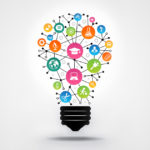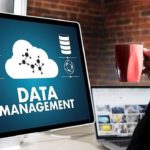Ewsolutions defines data literacy to be the ability to understand, write, communicate, and reason about data to make better data-driven decisions making. It is an array of skills that can be used to generate value from data, from decision-making to advanced technical skills in data science and data engineering.
There is a lot of confusion out there about what data literacy is. In this article, we will explain the different types of data literacy software and give you an overview of each one. We will also provide a list of the best data literacy software for learning how to analyze and understand data.
Framework for data literacy
It takes a lot of effort to become a data-literate organization. Ewsolutions uses the infrastructure, people, tools, organization, and processes framework, to assist organizations in understanding what they must scale to become data literacy.
Data infrastructure: ensuring everyone has to access to the data they need
Data literacy means that data can be collected, discovered, reliable, understandable, compliant, and subsequently used by all employees. An organization’s ability to make data-driven, decentralized decisions at scale is possible because it has governed access to reliable data.
People: A role-based approach for data literacy
People are the most important part of the infrastructure. To scale people, you need to create a culture that values data and allows everyone to communicate, reason, and speak with it. This involves the development of personalized data literacy programs that cater to all skill levels and cover all aspects of data literacy.
Tools: This tooling spectrum is the basis of data literacy
The wide range of tools that data professionals use across all levels of skill is called tools. Data literate companies are committed to providing inclusive tools that can accommodate different data types and use cases. This includes drag-and-drop business intelligence tools such as tableau and power bi and open-source programming languages. The development of templates and frameworks that can be used across all these tools is another component. These templates and frameworks reduce the time it takes to gain insight and lower the barrier for entry to working with data.
Organization: How to organize data talent for success?
The organization refers to the way you organize data talent to facilitate access to data insights at scale. There are many organizational models. One option is to choose a centralized model that positions the data team in support roles. Teams file their requests and the data team prioritizes them based on business requirements. A decentralized model, where data specialists are embedded in business functions, is on the other end of the spectrum. Both models have their pros and cons, as well as many hybrid models.
Processes: Increasing data literacy through collaboration
Processes are about creating processes between and within teams to increase data literacy on a large scale. Microsoft, for example, has adopted team data science process. This transparency allows stakeholders to view the project and understand its requirements, distinguish who is responsible for which stage, and use templates for data analysis. This applies to business stakeholders who work with the data team to ensure that they are scale-able.





